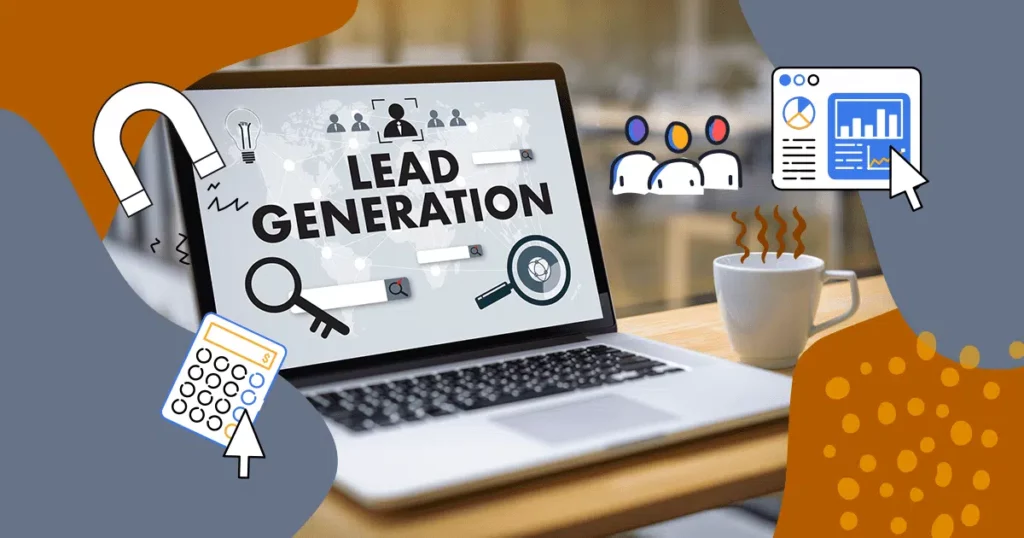In today’s highly competitive business landscape, generating leads is crucial for sustained growth and success.
A lead is a potential customer who has shown interest in your product or service and has the potential to become a paying customer.
Effective lead generation strategies not only increase your customer base but also enhance brand awareness and drive revenue.
In this comprehensive guide, we will delve into the intricacies of lead generation, explore various tactics, and provide you with actionable tips to optimize your lead generation efforts.
Understanding Lead Generation
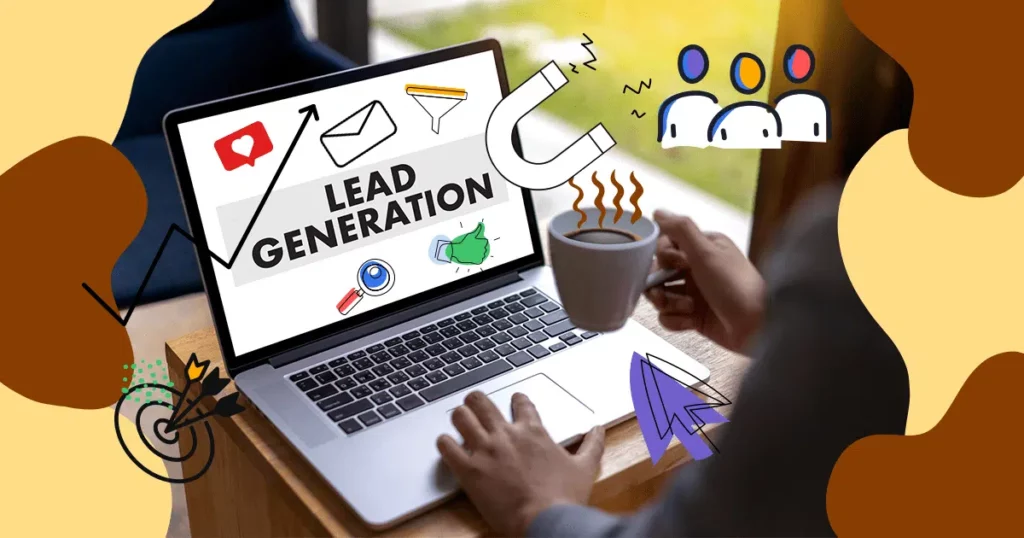
Lead generation is the process of identifying and attracting potential customers who have demonstrated an interest in your products or services.
It involves capturing their contact information, nurturing their interest, and ultimately converting them into paying customers.
The goal of lead generation is to build a pipeline of qualified leads that sales teams can engage with and convert into sales.
Importance of Lead Generation

Lead generation is the lifeblood of any business. Without a consistent flow of leads, businesses struggle to grow and sustain profitability.
Here are a few key reasons why lead generation is of paramount importance:
a. Expansion of Customer Base: Lead generation helps expand your customer base by attracting individuals or businesses interested in what you have to offer.
b. Boosting Sales: Qualified leads have a higher likelihood of converting into paying customers, leading to increased sales and revenue.
c. Enhanced Brand Awareness: Effective lead generation strategies increase brand visibility and create a positive reputation among your target audience.
d. Relationship Building: Lead generation allows you to establish meaningful connections with potential customers, nurturing them through the buying journey and building long-term relationships.
e. Market Research: Lead generation provides valuable insights into your target audience’s preferences, needs, and pain points, allowing you to refine your marketing strategies.
Key Components of Successful Lead Generation

To create an effective lead generation system, you need to focus on the following key components:
a. Target Audience Identification:
Clearly define your target audience based on demographics, interests, and behaviors. This enables you to tailor your messaging and offers to resonate with their needs and preferences.
b. Compelling Value Proposition:
Develop a unique value proposition that clearly communicates the benefits of your product or service. Differentiate yourself from competitors and highlight what sets you apart.
c. Effective Communication Channels:
Identify the most relevant channels to reach your target audience. This may include social media platforms, search engines, industry-specific website design, or offline events.
d. Lead Capture and Management:
Implement a robust lead capture mechanism through landing pages, forms, or lead magnets.
Ensure efficient lead management to nurture and qualify leads for the sales team.
Proven Lead Generation Strategies

a. Content Marketing:
Create high-quality, informative content that addresses your target audience’s pain points.
This can include blog articles, e-books, whitepapers, infographics, videos, and podcasts.
By consistently delivering valuable content, you establish yourself as an authority in your industry and attract potential customers who are seeking solutions to their problems.
b. Search Engine Optimization (SEO):
Optimize your website and content for search engines to increase organic visibility.
Conduct keyword research, optimize on-page elements, create relevant meta tags, and build high-quality backlinks to improve your search engine rankings and drive organic traffic.
c. Social Media Marketing:
Leverage the power of social media platforms to engage with your target audience.
Develop a robust social media strategy, create compelling content, and actively participate in discussions to build brand awareness, generate leads, and foster customer relationships.
d. Email Marketing:
Build an email list by offering valuable content or incentives in exchange for contact information.
Use email marketing campaigns to nurture leads, provide relevant information, and promote your products or services.
Personalize your emails to increase engagement and conversions.
e. Referral Programs:
Encourage your existing customers to refer your business to their friends and colleagues.
Offer incentives, such as discounts or rewards, for successful referrals.
Referral programs tap into the power of word-of-mouth marketing, which is highly effective in generating quality leads.
f. Webinars and Events:
Host webinars or participate in industry events to showcase your expertise and engage with potential customers.
Webinars allow you to educate your audience, address their pain points, and generate leads by capturing registration information.
g. Paid Advertising:
Utilize pay-per-click (PPC) advertising platforms like Google Ads or social media advertising platforms to target specific keywords, demographics, or interests.
Create compelling ad copy, design captivating visuals, and optimize your landing pages to maximize conversions.
h. Partnerships and Collaborations:
Identify non-competing businesses or influencers with a similar target audience and explore partnership opportunities.
Collaborate on joint marketing campaigns, co-host webinars, or cross-promote each other’s products or services to expand your reach and generate leads.
Lead Nurturing and Conversion

Once you’ve captured leads, it’s crucial to nurture them through the buying journey and convert them into paying customers. Effective lead nurturing involves:
a. Segmentation:
Divide your leads into specific segments based on their interests, demographics, or behavior.
This allows you to tailor your communication and offers to their specific needs and preferences.
b. Personalization:
Customize your communication to make it relevant and personalized for each lead. Use their name, refer to their specific interests or pain points, and provide targeted content that addresses their needs.
c. Automated Email Sequences:
Set up automated email sequences that deliver timely and relevant content to nurture leads.
Use a combination of educational content, product information, testimonials, and exclusive offers to guide leads toward making a purchase.
d. Lead Scoring:
Implement a lead scoring system to prioritize leads based on their level of engagement and readiness to buy.
Assign scores based on factors like email opens, clicks, website visits, and content downloads.
This helps the sales team focus their efforts on the most promising leads.
e. Sales and Marketing Alignment:
Foster collaboration and communication between your sales and marketing teams.
Share lead intelligence, provide feedback on lead quality, and establish a seamless handoff process to ensure a smooth transition from marketing to sales.
Tracking and Analytics
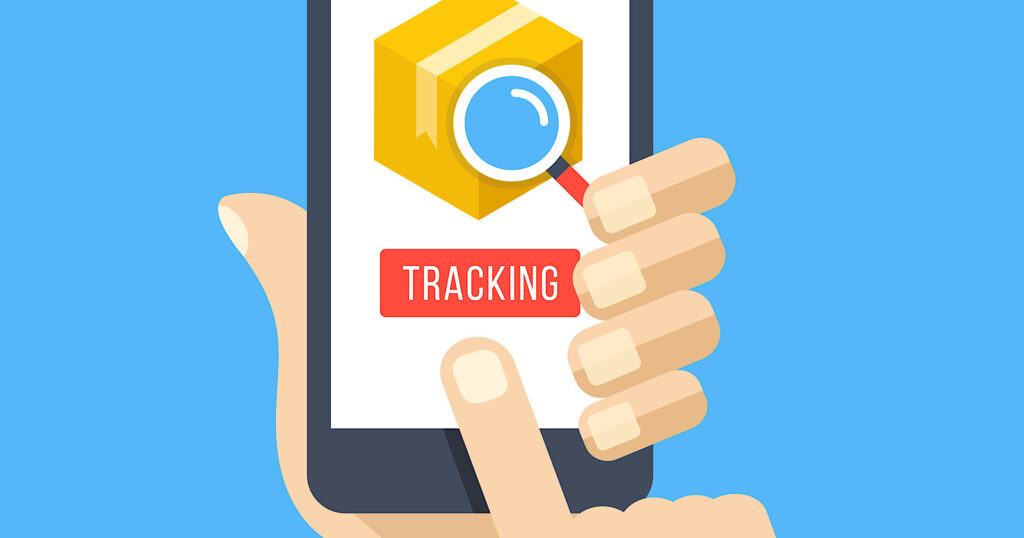
To optimize your lead generation efforts, it’s essential to track and analyze key metrics. Implementing analytics tools and tracking software allows you to:
a. Measure Conversions:
Track conversions at each stage of the lead generation process, from lead capture to final sale.
This provides insights into the effectiveness of your campaigns and helps you identify areas for improvement.
b. Analyze Traffic Sources:
Determine which channels and campaigns are driving the most traffic and conversions.
Allocate your resources accordingly to maximize your return on investment (ROI).
c. Monitor Engagement:
Track metrics such as email open rates, click-through rates, and social media engagement to assess the effectiveness of your messaging and content.
d. A/B Testing:
Conduct A/B tests to compare different variations of landing pages, email subject lines, call-to-action buttons, and other elements.
This allows you to identify the most marketing effective strategies and optimize your lead generation campaigns.
e. Customer Lifetime Value (CLV):
Calculate the CLV of your customers to understand their long-term value to your business.
This helps you prioritize lead generation efforts and allocate resources accordingly.
Lead Generation Tools and Technologies
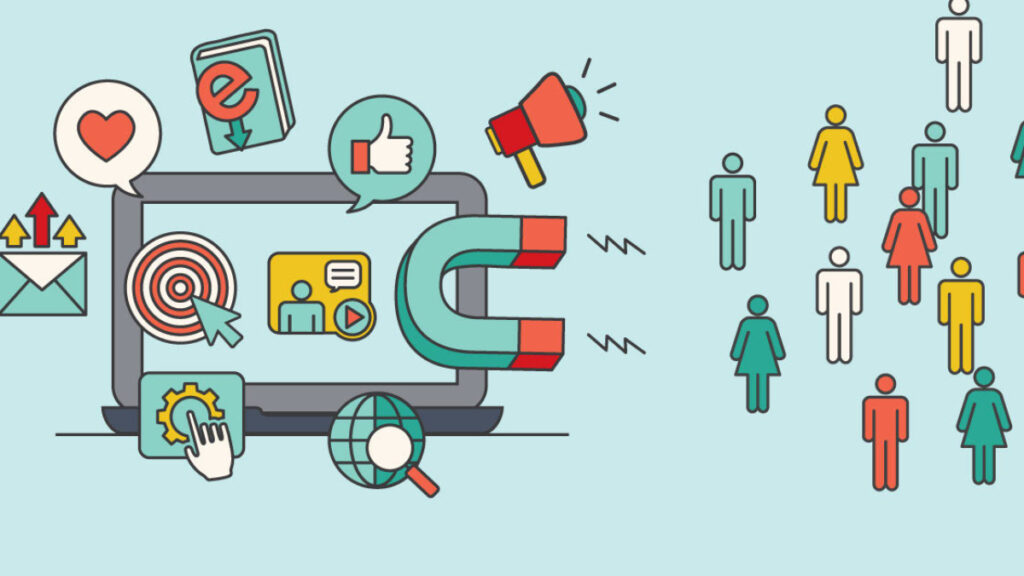
Numerous tools and technologies are available to streamline and enhance your lead generation efforts.
Some popular ones include:
a. Customer Relationship Management (CRM) Software:
CRMs help manage and track leads throughout the sales process. They provide a centralized database for storing lead information, monitoring interactions, and automating tasks.
b. Marketing Automation Platforms:
Automation platforms allow you to create and manage email campaigns, segment leads, and track customer behavior.
They help streamline lead nurturing and improve overall efficiency.
c. Landing Page Builders:
These tools enable you to create professional-looking landing pages with ease, often providing customizable templates and drag-and-drop functionality.
d. Lead Capture Forms:
Implement lead capture forms on your website and landing pages to collect visitor information.
Tools like pop-up forms, exit-intent forms, and embedded forms can help maximize conversions.
e. Analytics Tools:
Platforms such as Google Analytics, Kissmetrics, or HubSpot Analytics provide valuable insights into website traffic, user behavior, and campaign performance.
f. Social Media Management Tools:
Tools like Hootsuite, Buffer, or Sprout Social allow you to schedule posts, monitor social media mentions, and analyze engagement metrics across multiple platforms.
Optimizing Landing Pages for Lead Generation
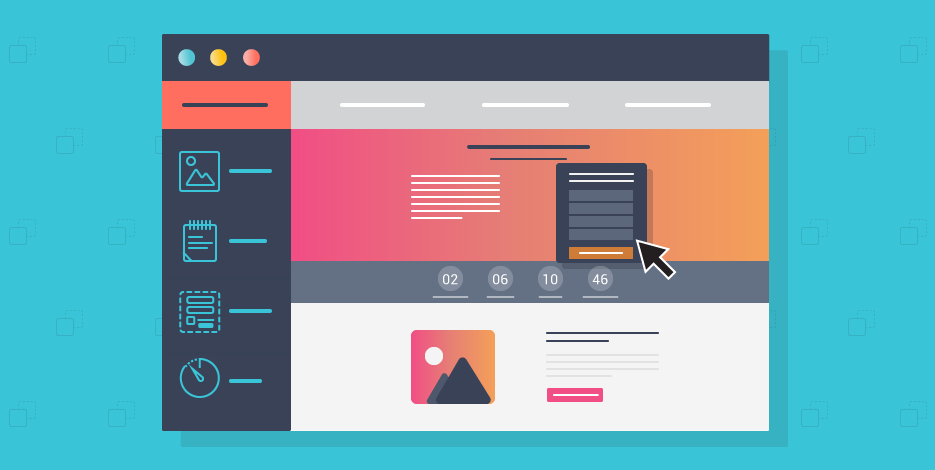
Landing pages play a crucial role in capturing leads. To optimize your landing pages:
a. Keep It Simple:
Maintain a clean and uncluttered design that focuses on the key message and call-to-action. Minimize distractions to keep visitors focused on the desired action.
b. Clear Value Proposition:
Clearly communicate the value your product or service offers and why visitors should provide their contact information. Highlight key benefits and unique selling points.
c. Compelling Call-to-Action (CTA):
Use a strong, action-oriented CTA that stands out and creates a sense of urgency. Clearly state what visitors will receive in exchange for their information.
d. Form Optimization:
Keep the lead capture form simple and concise, asking for essential information. Test different form lengths and formats to find the right balance between capturing enough information and reducing friction.
e. Social Proof:
Incorporate customer testimonials, case studies, or reviews to build trust and credibility. Social proof increases confidence in your offering and encourages visitors to take action.
f. Mobile Optimization:
Ensure your landing pages are fully responsive and optimized for mobile devices. With the increasing use of smartphones, a poor mobile experience can significantly impact conversion rates.
Leveraging Marketing Automation
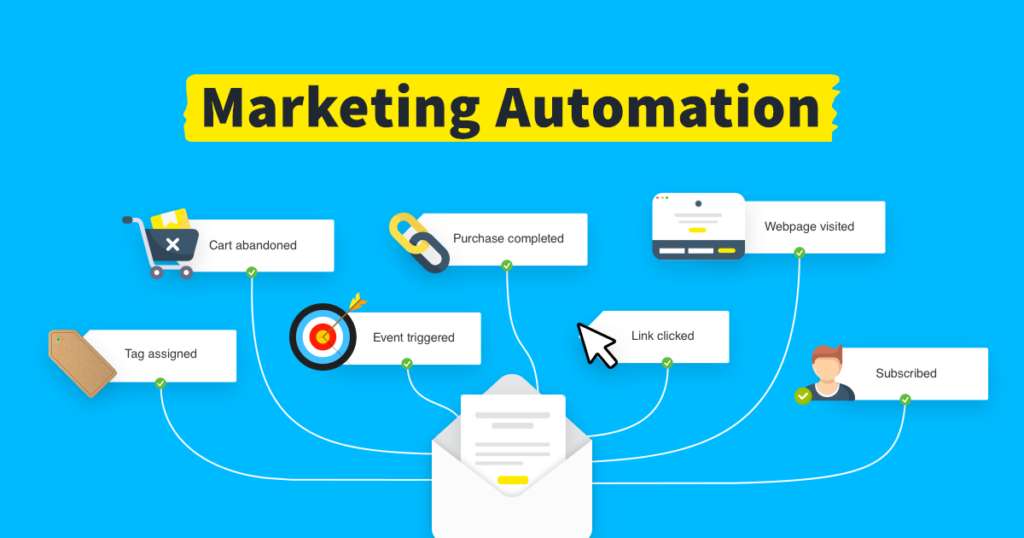
Marketing automation can streamline lead generation and nurture processes. By automating repetitive tasks and personalized communication, you can:
a. Implement Email Workflows:
Set up automated email sequences triggered by specific actions or events. This ensures leads receive relevant and timely content, nurturing them through the buying journey.
b. Lead Scoring and Segmentation:
Use automation to assign lead scores based on engagement levels and behaviors. Segment leads based on their score to deliver targeted content and prioritize follow-ups.
c. Behavior-Based Triggers:
Utilize automation to trigger personalized messages based on specific actions taken by leads. This can include abandoned cart emails, personalized recommendations, or re-engagement campaigns.
d. CRM Integration:
Integrate your marketing automation platform with your CRM system to synchronize lead data, track interactions, and ensure seamless communication between marketing and sales teams.
e. Drip Campaigns:
Create automated drip campaigns that deliver a series of targeted messages over time.
This keeps leads engaged and nurtures them until they are ready to make a purchase.
f. Lead Scoring and Grading:
Set up automated lead scoring and grading systems to identify the most qualified leads. This helps prioritize follow-ups and allocate resources effectively.
g. Personalization and Dynamic Content:
Leverage marketing automation to deliver personalized content based on lead preferences, behaviors, or demographics.
Dynamic content allows you to tailor messaging for different segments, increasing engagement and conversion rates.
Effective Lead Generation for B2B and B2C Businesses
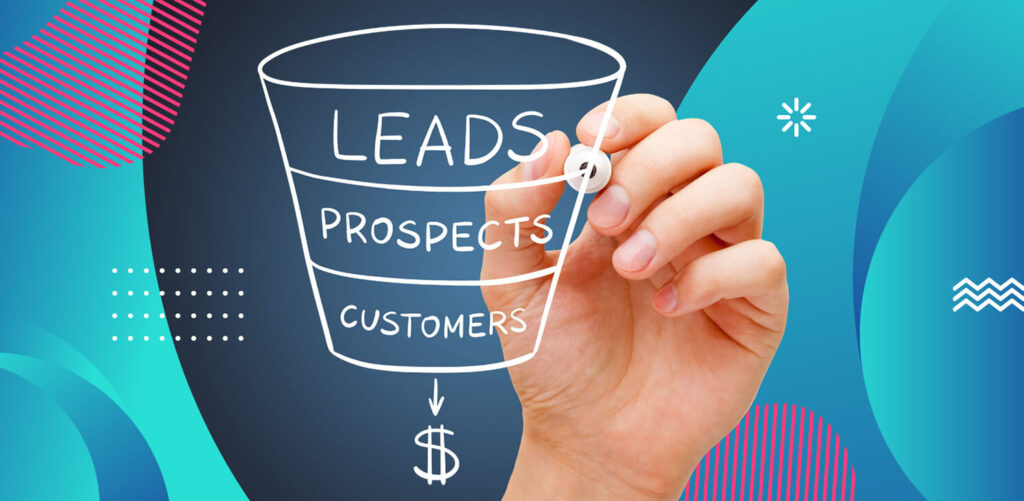
Lead generation strategies can vary depending on whether you are targeting businesses (B2B) or individual consumers (B2C).
Here are some key considerations for each:
B2B Lead Generation:
Focus on building relationships:
B2B sales cycles are typically longer and involve multiple stakeholders. Invest in relationship-building activities such as networking events, industry conferences, and strategic partnerships.
Thought leadership content:
Produce content that showcases your expertise and addresses the pain points of B2B decision-makers.
Whitepapers, case studies, and industry reports can be effective in establishing credibility.
Account-based marketing (ABM):
Customize your marketing efforts for specific target accounts by creating personalized campaigns and experiences tailored to their needs.
B2C Lead Generation:
Emotional appeals:
Appeal to the emotions and aspirations of your target consumers. Highlight the benefits, lifestyle improvements, or emotional gratification they can experience by using your product or service.
Influencer marketing:
Collaborate with influencers who align with your brand and have a significant reach among your target audience. Their endorsements can drive brand awareness and generate leads.
E-commerce optimization:
If you have an e-commerce business, optimize your website for conversions by providing a seamless user experience, clear product descriptions, and easy checkout processes.
Common Lead Generation Mistakes to Avoid
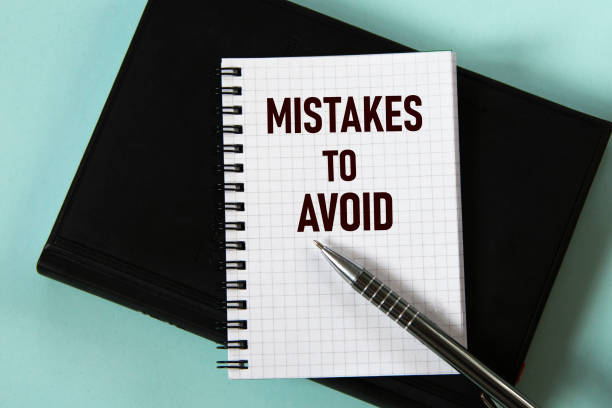
a. Lack of Targeting:
Failing to define and target a specific audience can lead to low-quality leads and wasted resources.
Take the time to identify your ideal customer profile and tailor your lead generation efforts accordingly.
b. Neglecting Lead Nurturing:
Generating leads is only half the battle. Without a proper lead nurturing strategy, many potential customers may slip through the cracks.
Build relationships, provide valuable content, and stay engaged with your leads throughout their buyer’s journey.
c. Overlooking Conversion Optimization:
A well-designed landing page or lead capture form can significantly impact your conversion rates.
Continuously test and optimize these elements to maximize your lead generation efforts.
d. Ignoring Data and Analytics:
Without tracking and analyzing key metrics, it’s challenging to measure the effectiveness of your lead generation campaigns.
Regularly review data and adjust your strategies based on insights gained.
e. Lack of Integration:
Siloed marketing and sales teams can lead to misalignment and missed opportunities.
Foster collaboration and ensure seamless integration between marketing automation platforms, CRM systems, and sales processes.
The Future of Lead Generation

Lead generation strategies continue to evolve with advancements in technology and changing consumer behaviors.
Here are a few trends shaping the future of lead generation:
a. AI-Powered Lead Scoring:
Artificial intelligence and machine learning algorithms enable more accurate lead scoring and prediction models, allowing businesses to identify high-value leads with greater precision.
b. Chatbots and Conversational Marketing:
Chatbots provide instant customer support and engage with website visitors in real-time, capturing leads and guiding them through the sales funnel.
c. Voice Search Optimization:
With the rise of voice-activated devices, optimizing your content and website for voice search queries will become increasingly importance in lead generation.
Businesses should focus on incorporating long-tail keywords, natural language, and featured snippets to optimize their content for voice search.
d. Personalized Experiences:
Customers expect personalized experiences throughout their interactions with a brand.
Personalization will become even more critical in lead generation, with tailored messaging, dynamic content, and customized offers based on individual preferences and behavior.
e. Privacy and Data Protection:
As data privacy regulations become stricter, businesses must prioritize compliance and build trust with customers.
Transparency in data collection and consent management will be crucial to maintain a positive reputation and secure customer trust.
f. Video Marketing:
Video content continues to dominate online platforms, capturing the attention of users and conveying messages effectively.
Incorporating video into lead generation strategies can enhance engagement and generate high-quality leads.
g. Social Media Integration:
Social media platforms are continuously evolving to offer more advanced advertising and lead generation features.
Integrating lead capture forms directly within social media platforms can streamline the lead generation process and drive higher conversion rates.
h. Virtual Events and Webinars:
With the increasing popularity of remote work and virtual interactions, virtual events and webinars will continue to be effective lead generation channels.
Businesses can host online events, workshops, or industry-specific webinars to attract and engage their target audience.
Conclusion
Lead generation is a fundamental aspect of any successful business. By understanding the key components, implementing effective strategies, and leveraging automation and technology, businesses can generate a steady stream of qualified leads, enhance brand awareness, and drive revenue growth.
Remember to identify your target audience, craft compelling value propositions, leverage various channels, and implement lead capture and management systems.
Nurture leads through personalized communication, monitor key metrics, and continuously optimize your strategies.
As the digital landscape evolves, embracing emerging trends such as AI-powered lead scoring, conversational marketing, and personalized experiences will help businesses stay ahead in the competitive lead generation landscape.
By adopting a comprehensive and strategic approach to lead generation, businesses can build a robust pipeline of qualified leads, forge strong customer relationships, and achieve long-term success in today’s dynamic business environment.

